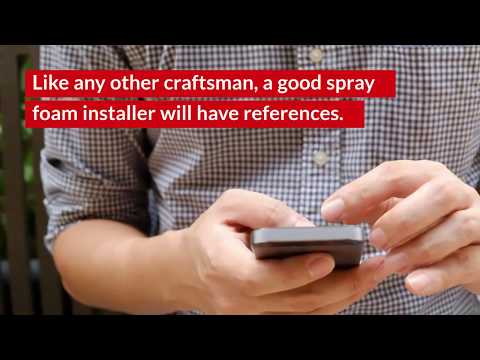When you think of insulation, you’re probably not thinking of spray on insulation and instead, you might think of fiberglass. And for 85% of the homes in the US, you would be correct. Fiberglass is cheap, common, and a decent insulator under the best conditions. But the best conditions require a rectangular house, and we don’t see many of those.
Because houses are being built with more odd shapes, spray on insulation has risen in popularity. Insulation is measured in R-factors. The higher the number the better.
Foam insulation, when installed by a trained technician, outperforms fiberglass by a wide margin. Even the best, tightest fitting fiberglass allows air to move. Foam stops air altogether.
Keep reading to learn the cold, hard truth about spray on insulation.
Quality of Spray on Insulation
There can be little doubt that spray foam costs more than fiberglass. It requires special equipment and a professional to install it.
Barring an act of God, when you account for longevity, spray foam even wins in cost. If you pay to install fiberglass, it will last a bit longer and insulate better than if you do it yourself.
But, fiberglass at it’s best can leave air gaps which create drafts in your house. These drafts cost you more during every second of colder weather. And, with that extra cost, your furnace works harder to heat the same space.
Also, fiberglass may only last 15-20 years. If you choose to pay more for spray on insulation, you save everywhere else. You won’t have to reinstall it because it lasts longer than you will own the house.
And the foam expands to fill all air gaps. The pressure of the spray adheres it to all edges and itself. Then the excess is cut flush with the studs before walls and ceilings are installed.
Instead of a draft, you have stable air heated or cooled to the level you desire. Your furnace will weather any polar vortex and your energy bill will reflect your investment.
However, it will only work this hard for you when you leave the installation to the pros. It might seem cheaper to hire the guy who just started doing spray foam.
But if his mix is wrong or the foam is lower quality, you pay thrice.
You first pay for a second-rate job. Then have to pay higher energy bills. And then you have to pay professionals to come out and do the job the right way.
Things to Watch Out For with Spray On Insulation
References
Like any other craftsman, a good spray foam installer will have references. And they will want to show off their work.
If they cannot provide you with references, find someone else. Yes, everyone had to start somewhere, but you don’t want to pay for 57 of their first 1000 mistakes.
Examine the Work
You cannot stay and watch the installation process because of several hazards. However, you can go through the work with a fine tooth comb. Look hard and long for areas which may have been missed.
You home has at least as much personality as you do, so it isn’t made of rectangles. That being the case, there will be many hard to reach places.
We don’t skip these and you shouldn’t pay anyone who will. Our techs love the chance to show their skill with odd corners and difficult spots.
You should feel absolute comfort in looking around after. Try to find areas which ended up much thinner or thicker. In spite of all the texture, there should be a uniformity to it.
Most Common Problems
Even though you don’t know much about house construction, you can perform quick checks. You want to look for common problems before paying off a job.
Insulation Thickness
Take a look at the entire job before you pay. Are any spots noticeably thinner or thicker?
Also, know what thicknesses mean for the insulation factor in your area. Texas, Washinton, and New Hampshire all have vastly different weather patterns. Make sure your insulation is appropriate for your area.
One clue to look for is the temperature. We think of attics as cold in the winter and super hot in the summer. But proper insulation prevents this.
Spray foam has a very high ability to insulate. Therefore, an attic, insulated with it, ought to feel much like all the other rooms of the house.
Air Leaks
Air and water like to get in where they aren’t supposed to. With them come a long list of problems. Air is the current subject matter, of course.
In the winter, it brings frigid temperatures to make your heating bill go up. In the summer, we try to keep out the humidity.
An air leak from an improperly sealed area will be able to be felt fast. So keep your eyes open and pay attention. The biggest advantage of spray foam is its ability to fill in all the air gaps.
However, a lazy installer might not spray enough insulation to fill all the gaps. Every area should feel like it is the same temperature. If one room or side of a room feels warmer or colder, say something and get it fixed.
Don’t Be Left Out in the Cold
It’s not hard to see that spray on insulation is a better investment. Yes, it can have problems, like anything else. But, with a careful eye and a trusted friend or two, you can nip those problems in the bud.
You can keep your fiberglass and higher energy bills if you want to. But we prefer to see your house as energy efficient and comfortable as possible.
Do you have more questions about the benefits of trading in fiberglass for some durable spray polyurethane foam? We welcome your questions, so get in touch with us here.
